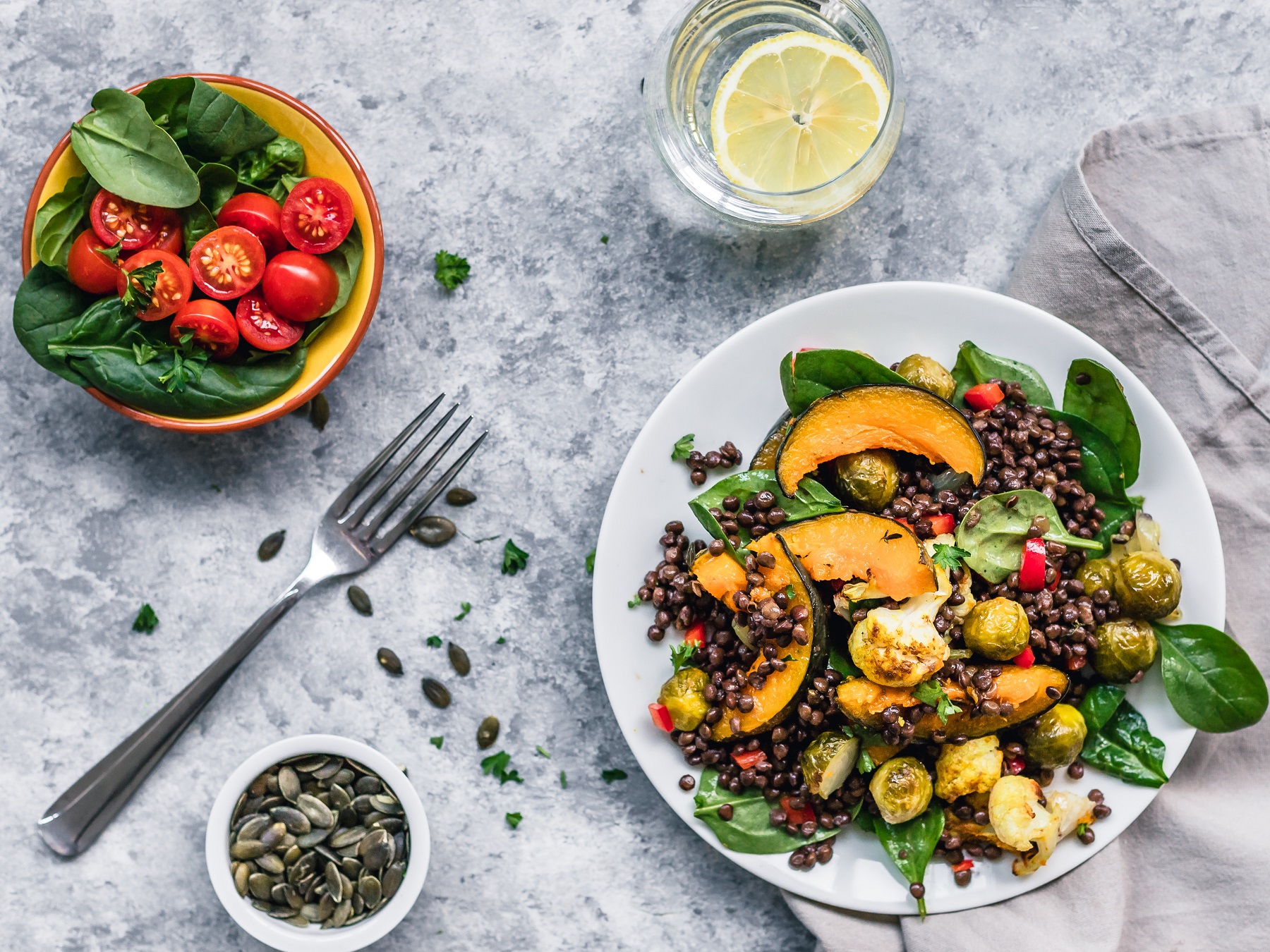
Could the gut microbiome play a part in improving the performance of professional athletes?
The gut microbiome – the community of bacteria and other organisms living in a person’s gut – has a powerful influence on our health. This collection of microbes has been implicated in a range of health functions, from cognitive capacity and mental health, to immunity and digestion. Over the last decade there has been increasing interest on the gut microbiome and ‘gut health’, along with many advances in research. This has made it a popular topic for research groups, health care practitioners and the general population alike.
Emerging research has also shown that the gut microbiome may have an impact on athletic performance, which leads to the idea that by keeping your gut microbiome balanced and healthy, it may be possible to not only stave off disease and health issues, but also improve mental health and athletic performance. This could have the potential to prolong not only the sporting careers of elite athletes, but also the quality of their lives in general.

Microba works with NRL athletes to improve gut health and performance. Read more.
Exercise and the microbiome
While it’s well-known that exercise is important for health, it’s only recently that researchers have come to learn that it also plays an important role in the health of gut bacteria. This is due to an increase in diversity – an evenly spread number of many different types of bacteria in the microbiome – which is a good indicator of health1 and an increase in the production of beneficial substances by gut bacteria2. An example of this is a study carried out on a group of international Rugby Union players3 that found they had increased gut microbiome diversity compared to non-athletes, and that this was correlated to exercise and diet.
Research such as this suggests that there is connection between the diet, gut microbiome, and elite sports performance2, and that athletes may benefit with improved metabolic function and reduced risk of disease2.
Why is the gut so powerful?
With the gut microbiome being home to many thousands of different microorganisms4, its influence on health is still a treasure trove of information waiting to be discovered.
The community of bacteria living in the gut can be visualised as a rainforest ecosystem of different living organisms, which all have a role to play.
These bacteria specialise in eating different things, just like humans do. When they eat different nutrients, they produce different compounds which can have positive or negative impacts on other bacteria and the functions of our body.
One key compound that is critical for our health is butyrate, which is a short chain fatty acid that fuels the intestinal cells of our gut, maintains the gut cell barrier, controls inflammation, regulates appetite and is protective against disease5. Butyrate keeps our colon healthy and fit, but not everyone has a good number of bacteria that can produce butyrate.
Most butyrate is produced when specific gut bacteria use dietary plant fibres, and in particular, resistant starch, as their main fuel source5. These fuel sources are also called prebiotics and are the preferential sources of food for gut bacteria. Prebiotics are foods that resist human digestion and make it all the way to the large intestine relatively untouched6. Prebiotics can be found in many foods from wholegrains such as wheat, rye and quinoa6 to vegetables and legumes such as broccoli, cooked and cooled potatoes, chickpeas, and lentils, to fruits such as blueberries, slightly green bananas and apples, to nuts and seeds.

Learn more about Prebiotics: what are they and why are they important for your gut.
Veillonella for super performers
In 2019, a study was published in Nature Medicine which looked at a performance-enhancing microbe that could assist elite athletes due to its ability to metabolise lactate. The bacteria was Veillonella, and the study showed that 30 people out of the 3,000 analysed had this species, which was around one per cent7. Those studied were marathon runners tested after running a marathon, with an increase in Veillonella relative abundance observed from stool samples. The study then isolated a strain of Veillonella atypica from the samples and injected them into mice. The mice injected with the bacteria were able to run for longer on the treadmill than those without7. Essentially, the study found that the genes involved in metabolising lactate to propionate (another short chain fatty acid) was at a higher abundance following exercise7.
There have been other studies linking the gut microbiome to lung capacity8, which also found that regular physical exercise provided many health benefits as well as improving quality of life. This is still a growing field of research, yet these key findings provide confidence that there is a lot of potential in helping athletes to use their gut to improve overall health and performance.
What can athletes do now to improve performance?
Although the Veillonella study was only performed on mice and there is yet to be a “super pill” to improve athletic performance, there are still steps that athletes – and the average Australian – can take to maximise the impact of their gut bacteria.
The right foods containing the prebiotics mentioned, can make a difference to health, keeping the gut microbiome fit, strong and able to assist in overall health and athletic performance. By eating a wide variety of prebiotics for your gut microbiome, the different species that play various roles are kept functioning at optimal levels.

Discover what prebiotics you may need more of to perform at your best, with Microba Insight™.
This microbiome test is not intended to be used to diagnose or treat medical conditions. A full disclaimer is available here
References
Shanahan F. .
Probiotics in perspective..
Gastroenterology, 139:1808–12 (2010).
Mailing, L. J. et al. .
Exercise and the gut microbiome: a review of the evidence, potential mechanisms, and implications for human health. .
Exercise and Sport Science Reviews, 47(2):75-85 (2019). . Doi: doi: 10.1249/JES.0000000000000183.
S. F. Clarke, E. F. Murphy, O. O'Sullivan, A. J. Lucey, M. Humphreys, A. Hogan, P. Hayes, M. O'Reilly, I. B. Jeffery, R. Wood-Martin, D. M. Kerins, E. Quigley, R. P. Ross, P. W. O'Toole, M. G. Molloy, E. Falvey, F. Shanahan, P. D. Cotter. .
Exercise and associated dietary extremes impact on gut microbial diversity. .
Gut, (2014).. Doi: doi: 10.1136/gutjnl-2013-306541
Gary D. Wu and James D. Lewis. .
Analysis of the Human Gut Microbiome and Association with Disease. .
Clin Gastroenterol Hepatol, 11(7) (2013 Jul).. Doi: doi: 10.1016/j.cgh.2013.03.038.
Baxter, N.T. et al. .
Dynamics of Human Gut Microbiota and Short-Chain Fatty Acids in Response to Dietary Interventions with Three Fermentable Fibers. .
mBio, 10 (1) e02566-18 (Jan 2019). . Doi: DOI: 10.1128/mBio.02566-18
Gibson, Glenn R., et al. .
Expert consensus document: The International Scientific Association for Probiotics and Prebiotics (ISAPP) consensus statement on the definition and scope of prebiotics. .
Nature Reviews Gastroenterology & Hepatology, 14(8): 491 (2017). . Doi: doi: 10.1038/nrgastro.2017.75.
Jonathan Scheiman, Jacob M. Luber, Theodore A. Chavkin, Tara MacDonald, Angela Tung, Loc-Duyen Pham, Marsha C. Wibowo, Renee C. Wurth, Sukanya Punthambaker, Braden T. Tierney, Zhen Yang, Mohammad W. Hattab, Julian Avila-Pacheco, Clary B. Clish, Sarah Lessard, George M. Church & Aleksandar D. Kostic. .
Meta-omics analysis of elite athletes identifies a performance-enhancing microbe that functions via lactate metabolism. .
Nature Medicine, 25, 1104-1109 (2019).
Begoña Cerdá, Margarita Pérez, Jennifer D. Pérez-Santiago, Jose F. Tornero-Aguilera, Rocío González-Soltero, Mar Larrosa. .
Gut Microbiota Modification: Another Piece in the Puzzle of the Benefits of Physical Exercise in Health? .
Front Physiol, 7: 51 (2016).. Doi: doi: 10.3389/fphys.2016.00051


